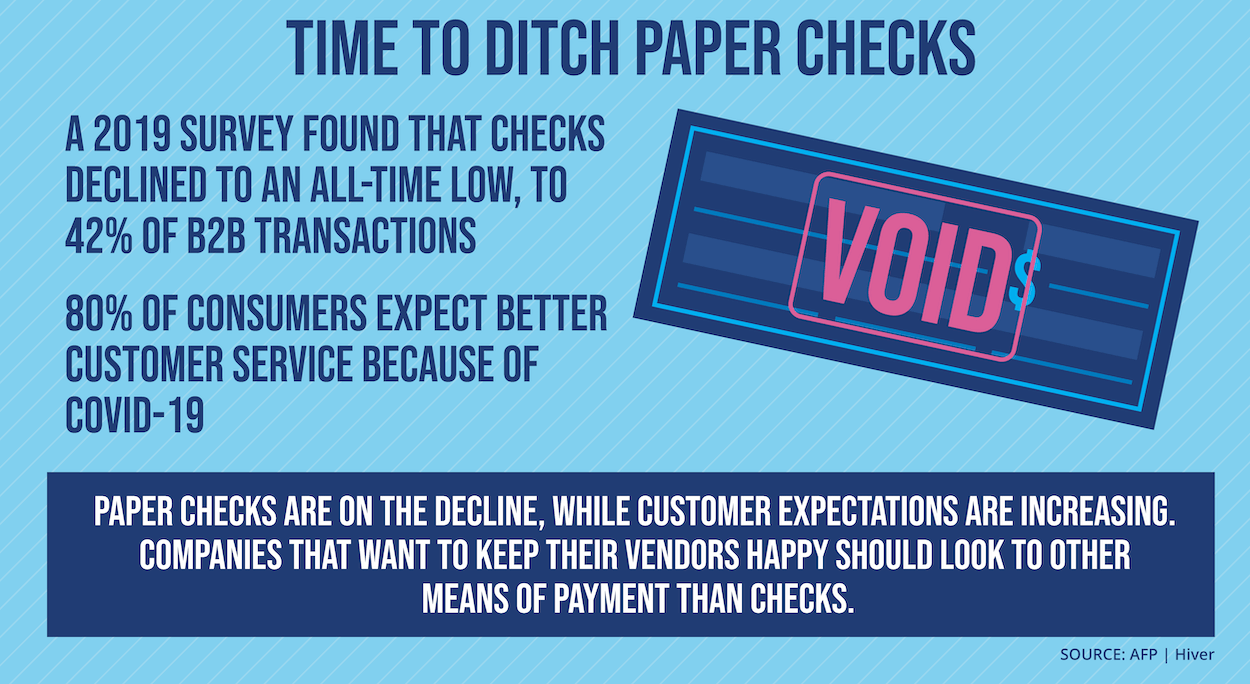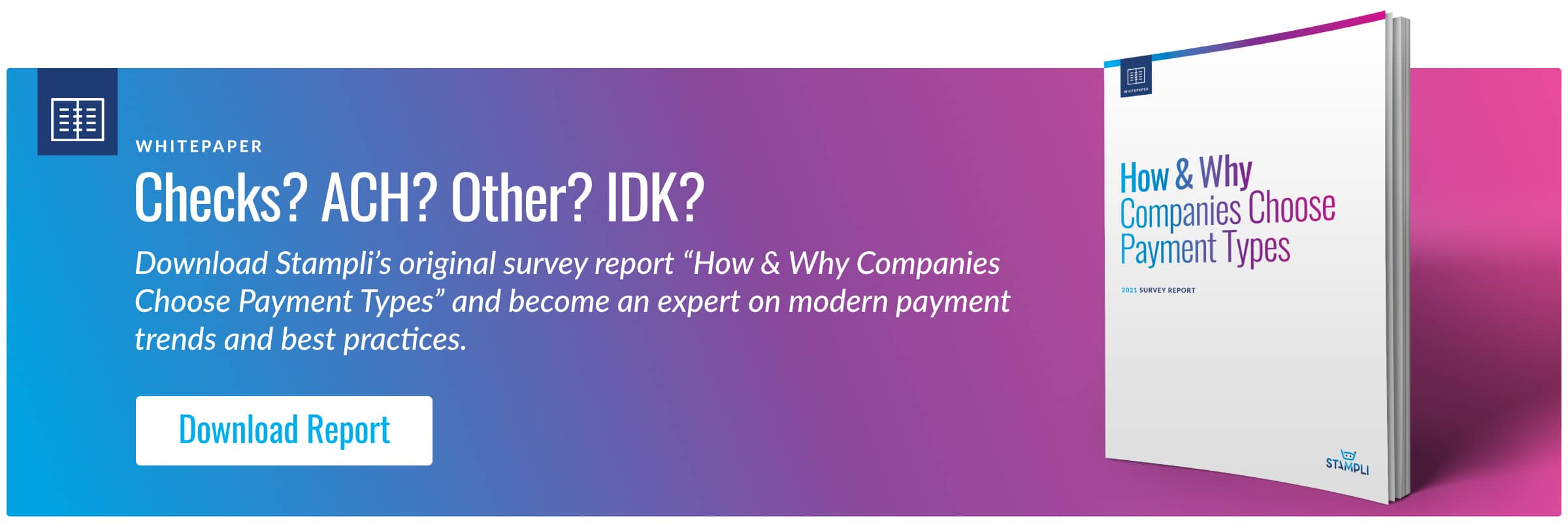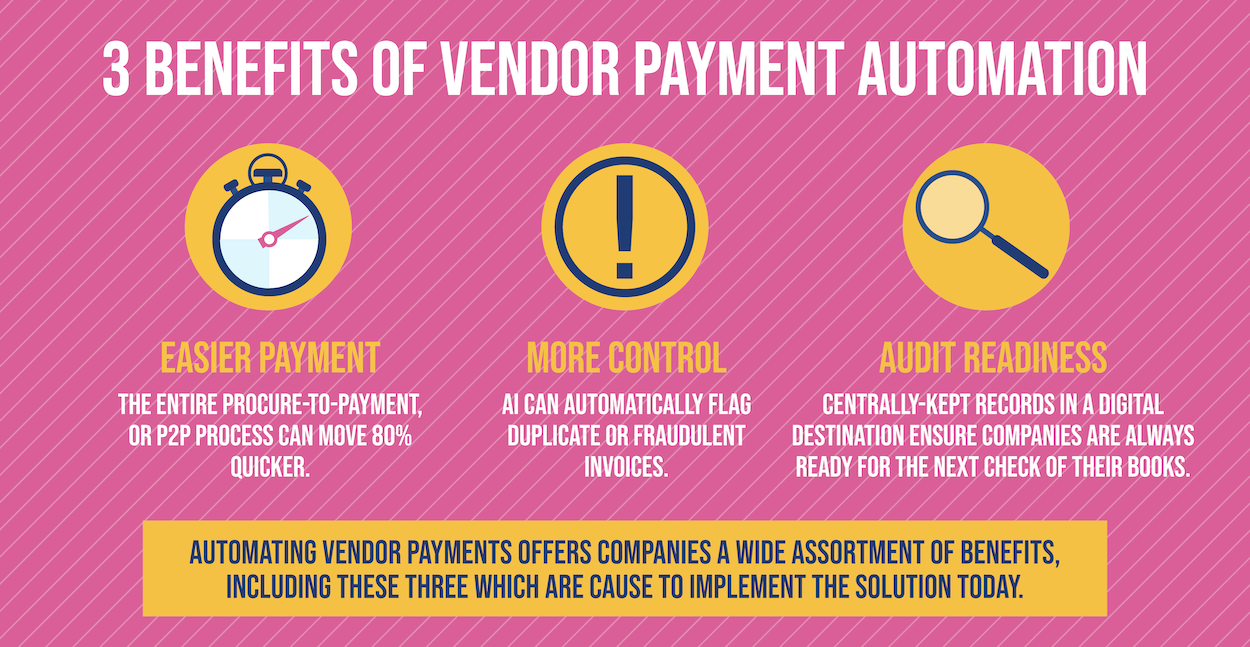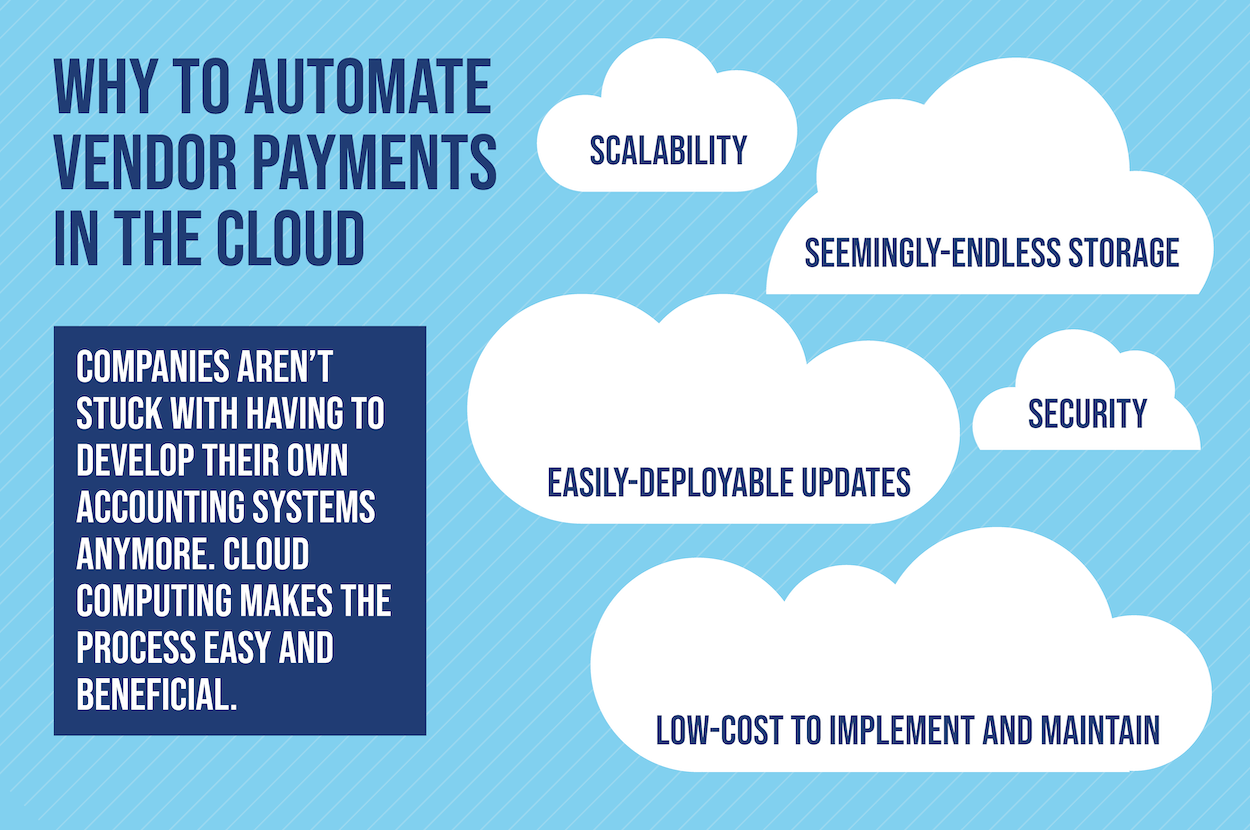Improving AP Efficiency with Vendor Payment Automation

The average U.S. company can pay hundreds of invoices each month and the process, traditionally, hasn’t always been the easiest when conducted manually. Aside from having enough cash or credit to pay vendors even in tough economic times, businesses must navigate payment deadlines and internal approvals that can vary depending on vendor or service. Then there’s the practice of three-way matching to ensure the invoice hasn’t been paid already, goods and services were delivered, and the invoice is legitimate.
All of these practices when conducted manually is the equivalent to having one’s hands tied behind their back. The accounts payable function can be a recipe for disaster when performed manually, but thanks to automation, the process is both easier and more controlled.
Join us as we discuss the need for vendor payment automation, its benefits, and how to implement it today.
Why Manual Vendor Payment Hacks Aren’t Enough Without Automation

For companies uncertain if they want to invest in accounts payable automation software, certain hacks can boost AP efficiency. However, these improvements might not be enough on their own, should a company lack automation within its accounting department. Here’s why this is.
1. Prioritizing Vendor Relations
Customer service matters more than ever, with over 80 percent of consumers saying in a survey released in October that they expect improved service during the COVID-19 pandemic. The same holds true in the business-to-business world, with so many people under higher levels of stress than ever.
Making it easier for vendors and letting them know they’re valued partners is never a bad idea, but these days, it’s a lifeline. It lets vendors know that they can count on that invoice getting paid before so they can pay their own network of vendors to ensure supply chain continuity.
Why it’s not enough without automation: Well-intentioned accounts payable clerks and departments can keep their vendors in the loop with outstanding communication. But they might still struggle to keep track of the deadlines and approvals needed for every invoice. Even with the best of intentions, AP staff can easily fall behind.
2. Getting Strategic With Electronic Payments
Fewer payments are being made with paper checks these days, with the 2019 Association for Financial Professionals survey finding “check usage for B2B transactions declined to an all-time low to 42 percent.” This tracks with other declines in paper-based payment, with the European Central Bank noting in September that non-cash payments in Europe increased by 8.1 percent in 2019.
It’s easy to see why payments are less paper-based these days. It connects with the expectation from both consumers and vendors of better service from companies.
“Customers have really come to expect full transparency, instant access and gratification, and a seamless experience for payments, just like they expect in every digital experience of their lives,” Western Union executive Shelly Swanback told PYMNTS for an Oct. 29 post. “That goes not just for consumers, but for small and medium businesses as well.”
Accounting departments see benefit from electronic payments through the automated clearing house and other means, enabling for more control over their B2B payment processes.
For example, businesses can schedule ACH payments days in advance (though the National Automated Clearing House Association noted on Oct. 19 that same-day ACH is coming.) Companies will also save money opting for payment methods like the ACH over paper checks.
Why it’s not enough without automation: A human AP clerk will still have to manually schedule vendor payments if their company lacks automation software. And that comes after they have to key the invoice into their firm’s accounting system, pull together purchase orders and receipt reports with the invoice for all-important three-way matching, and hunt for approvals so the invoice can be paid. Then consider the check approval and mailing processes on top of the manual invoice processes.
At minimum, accounts payable should leverage automation from receipt to approval, and pay their way or the desired preference of their vendor. This will at least ensure control over the entire receipt-to-pay process, giving them the option to cut a check if desired. AP automation software providers like Stampli support any approval and payment process. For example with Stampli Direct Pay, companies can pay their vendors by ACH, painless paper checks, or pay by their desired payment method.

3. Insisting on Daily Reconciliations and Rigorous Reporting
Some companies fly by night when it comes to their accounting. They get lax in their reporting. They don’t do anywhere close to daily reconciliations where, as Investopedia notes, they compare “two sets of records to check that figures are correct and in agreement.”
It’s only so long before companies that live like this get themselves into real trouble with their books. Efficient accounts payable departments have a standardized process to follow for every vendor invoice which ensures controls, and the most efficient departments have guidelines for exception handling as well. As Eyal Feldman says, “your efficiency and strength [as a department] is determined by your weakest link and the weakest link in AP is how you handle exceptions.”
Why it’s not enough without automation: With workers spread so thin due to ongoing business challenges from the COVID-19 pandemic, workers might not have time to each facet of reconciliations or reporting themselves. Nor should they have to, really. Accounting automation software was seemingly built for this enabling invoices to be approved, processed, and paid from any working location. Moreover, AP automation software is flexible to your processes and adapts to any process changes, such as exceptions.
Three Reasons to Implement Vendor Payment Automation

In order to deliver accountability, control, and pay vendor invoices on time, companies will need accounts payable software to automate their processes. Here are some of the benefits to consider from vendor payment automation.
Quicker, Easier Payment Cycles and Happier Vendors
Things move a lot quicker with automation, but also more controlled. Where it might take a month to receive an invoice approval in a manual, paper-based process, automation can cut the time by 80 percent, according to a Stampli case study. When it comes to controls, vendor payment automation software tracks every action made which enables accountability for each stakeholder to take part in the process. Then the audit-ready history available on every invoice provides everyone involved with visibility into the entire process.
Bill payment’s a lot easier as well. As opposed to having to print check after check, digital batch payments can be generated instantly. Stampli’s solution allows remittance to be done within the system in bulk. The best part is that companies can also pay their way outside the system. This is because Stampli doesn’t lock companies into payment methods or try to push virtual cards with fees to vendors. Stampli sees payments as a commodity and includes payments for the convenience of customers, and not as a revenue generator by trying to turn vendors of customers into new customers.
All of this makes for happier vendors and stronger management of them. Staff time doesn’t get tied up with queries from vendors, wondering why they haven’t been paid. In fact, vendors are more likely to give early payment discounts (which typically run around 2-3 percent), since it’s easier for companies that use automation software to hit these deadlines.
1. Better Control Over Payment
Stampli now offers a payment-agnostic feature for AP Automation customers called Stampli Direct Day. With Direct Pay, AP departments can set their preferred methods to pay bills, whether it’s by the ACH, touchless paper check, or outside Stampli. Payers control their payment with automation; payment doesn’t control them.
Better payment controls also means less chance of paying fraudulent or duplicate invoices. Artificial intelligence and machine learning tools within the automation platforms flag duplicates and mismatches, and help extract data into easy-to-use management dashboards.
“It’s getting more sophisticated in terms of using more advanced artificial intelligence, machine learning and the like, particularly in the compliance and product risks space,” Swanback told PYMNTS. “We have literally thousands of rules that we’re looking at in each transaction on a real-time basis to help identify potential fraudulent transactions.”
Automation software helps companies pay their bills confidently, control the amount they spend, and gain command of their cash flow.
2. More Audit Readiness
It might not be an issue so much of if an accounts payable department gets audited, as when it will happen. As one accountant and certified fraud examiner writes, “Accounts payable is usually one of the more important audit areas. Why? Risk. First, it’s easy to increase net income by not recording period-end payables. Second, many forms of theft occur in the accounts payable area.”
When the inevitable audit comes, having automation software in place can help ensure it goes smoothly. Whether an internal or external audit, AP automation makes the process easy with advanced search functionality and visibility into every action. There doesn’t have to be any frantic hunt for paper records when a company has its accounting documents fully digitized and automated.
How to Make Vendor Payment Automation Part of Your Business

Vendor payment automation might sound like a futuristic, impossibly-complex undertaking. It doesn’t have to be too sophisticated, though, for a company to get automation up and running. It’s about doing the following.
Look to the Cloud
It used to be that if a company wanted to build an accounting system, it had to invest heavily in developing a proprietary system with limited functionality that would require ongoing maintenance from internal IT staff and still quickly become out-of-date. Thanks to cloud computing, however, those days are over.
No company in the year 2020 has to be stuck with a legacy accounting system. If they are, they’re clinging to a past that doesn’t have to exist anymore in business. Cloud-based accounts payable automation solution providers such as Stampli are waiting with affordable, easy-to-use platforms that can be operational in weeks, not months.
Know Which Software Features Matter Most
With so many AP automation vendors out there, there are a lot of potential system features for companies to sort through as they find the right solution. And to some extent, the perfect array of features will depend on the needs of a particular company.
That said, some AP automation software features matter more than others and will have fairly universal appeal. On the other hand, one thing that stands out is the ability for the platform to work with any process, and be up and running within days — not a long implementation project. That’s what you get with Stampli; an industry-leading AP automation system that maintains your controls and processes. Then with centralized communication tools built in on top of each invoice, every stakeholder is on the same page, or rather, the same invoice.
Opt for a System that Can Scale as Business Grows
Overall, the cloud has opened up vast new possibilities for accounts payable departments, making it so they needn’t invest in costly and ineffective on-premises systems. The cloud also helps companies scale accounts payable operations as business scales. Moreover, when companies switch financial systems, the cloud (i.e. AP automation) can work with any system or process change.
“The promise of [the] cloud is really about flexibility and scale,” Swanback told PYMNTS. “The ‘plug-and-play’ applications allow you to make complete business model pivots and let you identify and go after those new opportunities.”
But the cloud alone can’t grow with your business. It’s about finding the right vendor, too, a vendor payment automation solution provider that has the ability and the dedication to be there for clients for the long haul.
Vendor payments needn’t hold your business hostage. Visit Stampli today to save time and money with automation.